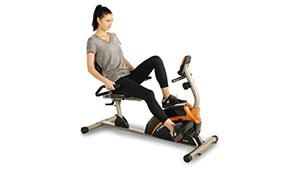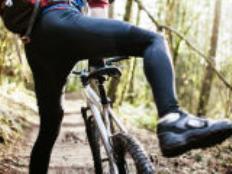Recovery Weeks
The distance of the Saturday ride increases for two weeks. Then, there's a short-ride week. This pattern of building volume followed by a recovery week helps you build fitness without wearing your body down. Be careful of trying to increase weekly training volume for several weeks, as this can lead to injuries and overall fatigue.
Intensity Guide
To keep things simple, use this intensity rating scale:
Zone 1 - Very easy
Zone 2 - Breathing harder
Zone 3 - Moderately tough
Zone 4 - A fast pace that can be held for several minutes at a time
Zone 5 - Fast riding that can't be held for more than a minute
Monday Workouts
For all Monday rides, most of the workout should be done with Zone 1 to 3 intensity. Include an occasional Zone 5 burst, followed by a generous amount of Zone 1 and 2 riding. The Zone 5 efforts can be done in or out of the saddle.
Some instructors like to jump in and out of the saddle for four or fewer pedal strokes, repeating the action for an entire song. This movement does little more than provide an upper body workout. Avoid doing these "bike push-ups" and instead try efforts that can improve power in your legs. Make them 10 to 60 seconds long, followed by one or two minutes of Zone 1 and 2 riding.
More: 5 Time-Saving Training Tips for Triathletes
Wednesday Workouts
Wednesday rides should be done with Zone 1 to 4 intensity and should include long (more than 60 seconds) hill-climbing efforts. You can simulate hill climbing by increasing the tension on the flywheel of your bike. Depending on how you feel on any given day, the hill climbing can be done at Zone 3 or 4. Recoveries should be around one-third of the work time.
The Long Ride
For the first four weeks of the training plan, keep the intensity of your long ride from Zone 1 to 3. In the subsequent weeks, include all zones. Be careful not to treat each outdoor ride like a race. Instead, build up the time you ride in Zone 3 and above throughout the training plan.
Fluids
Carry a water bottle on your bike at all times. Plan to consume about one bottle of fluid per hour during all rides. You should use water for rides up to 120 minutes. Once the rides get longer than two hours, carry an energy drink with electrolytes.
Fuel
For rides that are longer than two hours, carry something to eat. Fruit, trail mix, energy bars, and peanut butter and jelly sandwiches are great options. Aim to consume 150 to 250 calories per hour, each hour after the one-hour mark.
Note: These fluid and fuel guidelines are starting points. You'll need to adjust depending on how you feel during and after rides.
More: How Data Can Help You Hydrate and Fuel on Race Day
 Search for your next cycling event.
Search for your next cycling event.
- 2
- of
- 2
About the Author

Gale Bernhardt was the USA Triathlon team coach at the 2003 Pan American Games and 2004 Athens Olympics. She's worked as one of the few World Cup coaches and delivered coached education training for the Triathlon Union's Sport Development Team. She has coached Olympic road racers, World Cup mountain bike riders and Leadville 100 racers. Thousands of athletes have had successful training and racing experiences using Gale's ready-to-use, easy-to-follow training plans.








Discuss This Article